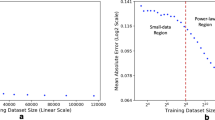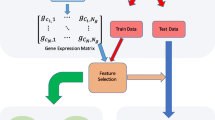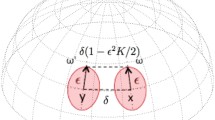Abstract
Purpose
The effect of an anticancer treatment on tumor cell proliferation in vitro can be described as a three-dimensional surface where the inhibitory effect is related to drug concentration and treatment time. The analysis of this kind of response surface could provide critical information: for example, it could indicate whether a prolonged exposure to a low concentration of an anticancer agent will produce a different effect from exposure to higher concentrations for a shorter period of time. The parametric approach available in the literature was not flexible enough to accommodate the behavior of the response surface in some of the data sets collected as part of our research programs. Therefore, a new, general, nonparametric approach was developed.
Methods
The response surface of the inhibition of cell-based tumor growth was described using a radial basis function neural network (RBF-NN). The RBF-NN was trained using regularization theory, which provided the initialization of a constrained quadratic optimization algorithm that imposes monotonicity of the surface with respect to both concentration and exposure time.
Results
In the two analyzed cases (doxorubicin and flavopiridol), the proposed method was accurate and reliable in describing the inhibition surface of tumor cell growth as a function of drug concentration and exposure time. Residuals were small and unbiased. The new method improved on the parametric approach when the relative importance of drug concentration and exposure time in determining the overall effect was not constant across the experimental data.
Conclusions
The proposed RBF-NN can be reliably applied for the analysis in cell-based tumor growth inhibition studies. This approach can be used for optimizing the administration regimens to be adopted in vivo. The use of this methodology can be easily extended to any cell-based experiment, in which the outcome can be seen as a function of two experimental variables.







Similar content being viewed by others
References
Bertero M (1989) Linear inverse problems and ill-posed problems. Adv Electronics Electron Phys 75:1–120
Dayhoff JE, DeLeo JM (2001) Artificial neural networks, opening the black box. Cancer 91:1615–1635
De Nicolao G, Saracino G, Cobelli C (1997) Nonparametric input estimation in physiological systems: problems, methods, and case studies. Automatica 33:851–870
Fletcher R (1981) Practical methods of optimization, 2nd edn. John Wiley & Sons, New York
Gill PE, Murray W, Wright MH (1981) Practical optimization. Academic Press, San Diego London
Girosi F, Jones M, Poggio T (1995) Regularization theory and neural networks architectures. Neural Comput 7:219–269
Golub GH, Heath M, Wahba G (1979) Generalized cross-validation as a method for choosing a good ridge parameter. Technometrics 21:215–224
Kalns JE, Millenbaugh NJ, Wientjes MG, Au JL-S (1995) Design and analysis of in vitro antitumor pharmacodynamic studies. Cancer Res 55:5315–5322
Millenbaugh NJ, Wientjes NG, Au JL-S (2000) A pharmacodynamic analysis method to determine the relative importance of drug concentration and treatment time on effect. Cancer Chemother Pharmacol 45:265–272
Poggio T, Girosi F (1990) Networks for approximation and learning. Proc IEEE 78:1481–1497
Rubinstein LV, Shoemaker RH, Paull KD, Simon RM, Tosini S, Skehan P, Scudiero DA, Monks A, Boyd MR (1990) Comparison of in vitro anticancer-drug-screening data generated with a tetrazolium assay versus a protein assay against a diverse panel of human tumor cell lines. J Natl Cancer Inst 82:1113–1118
Skehan P, Storeng R, Scudiero D, Monks A, McMahon J, Vistica D, Warren JT, Bokesch H, Kenney S, Boyd MR (1990) New colorimetric cytotoxicity assay for anticancer-drug screening. J Natl Cancer Inst 82:1107–1112
Acknowledgement
The authors are grateful to Marina Ciomei for useful discussions.
Author information
Authors and Affiliations
Corresponding author
Rights and permissions
About this article
Cite this article
Germani, M., Magni, P., De Nicolao, G. et al. In vitro cell growth pharmacodynamic studies: a new nonparametric approach to determining the relative importance of drug concentration and treatment time. Cancer Chemother Pharmacol 52, 507–513 (2003). https://doi.org/10.1007/s00280-003-0688-7
Received:
Accepted:
Published:
Issue Date:
DOI: https://doi.org/10.1007/s00280-003-0688-7




